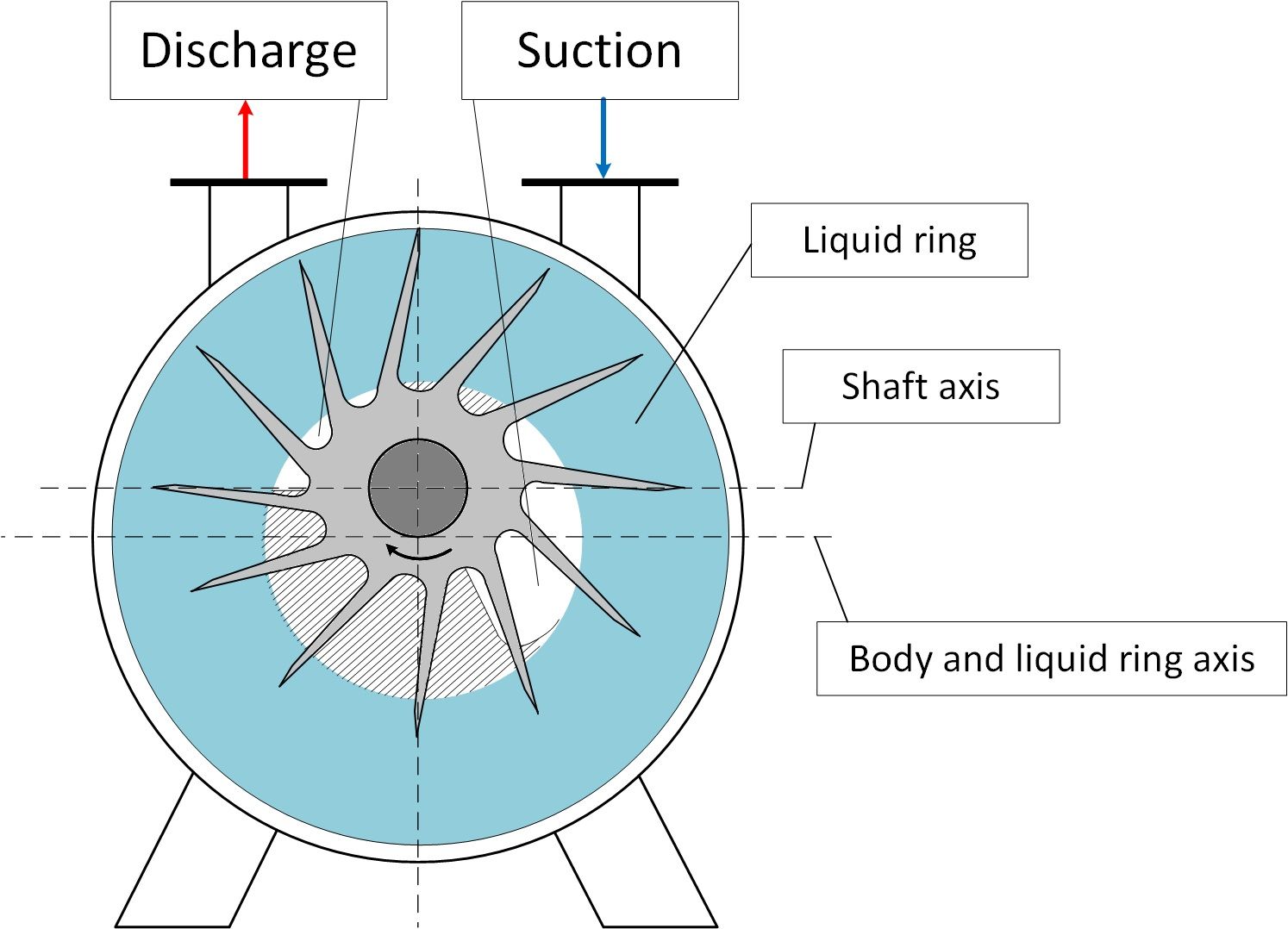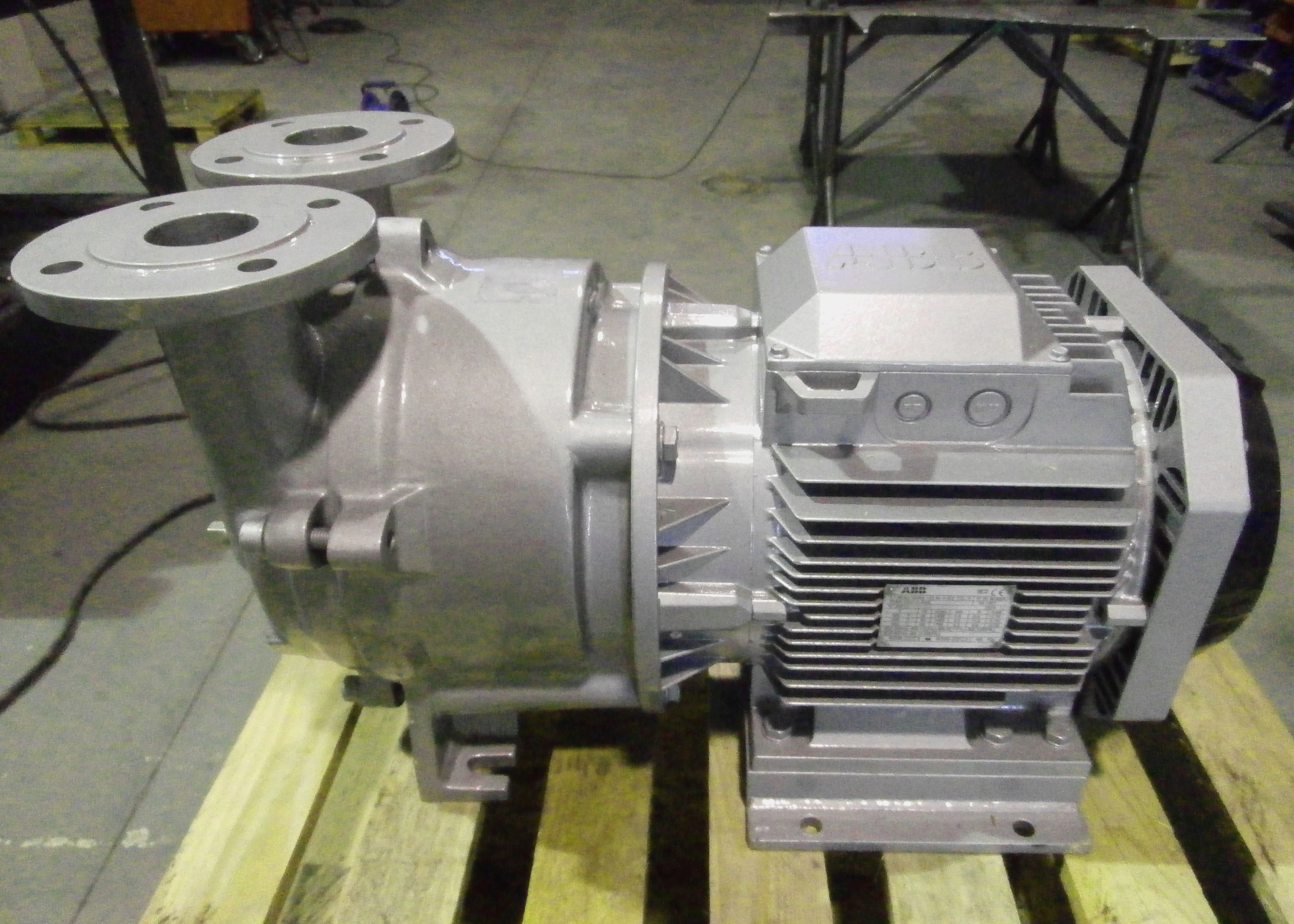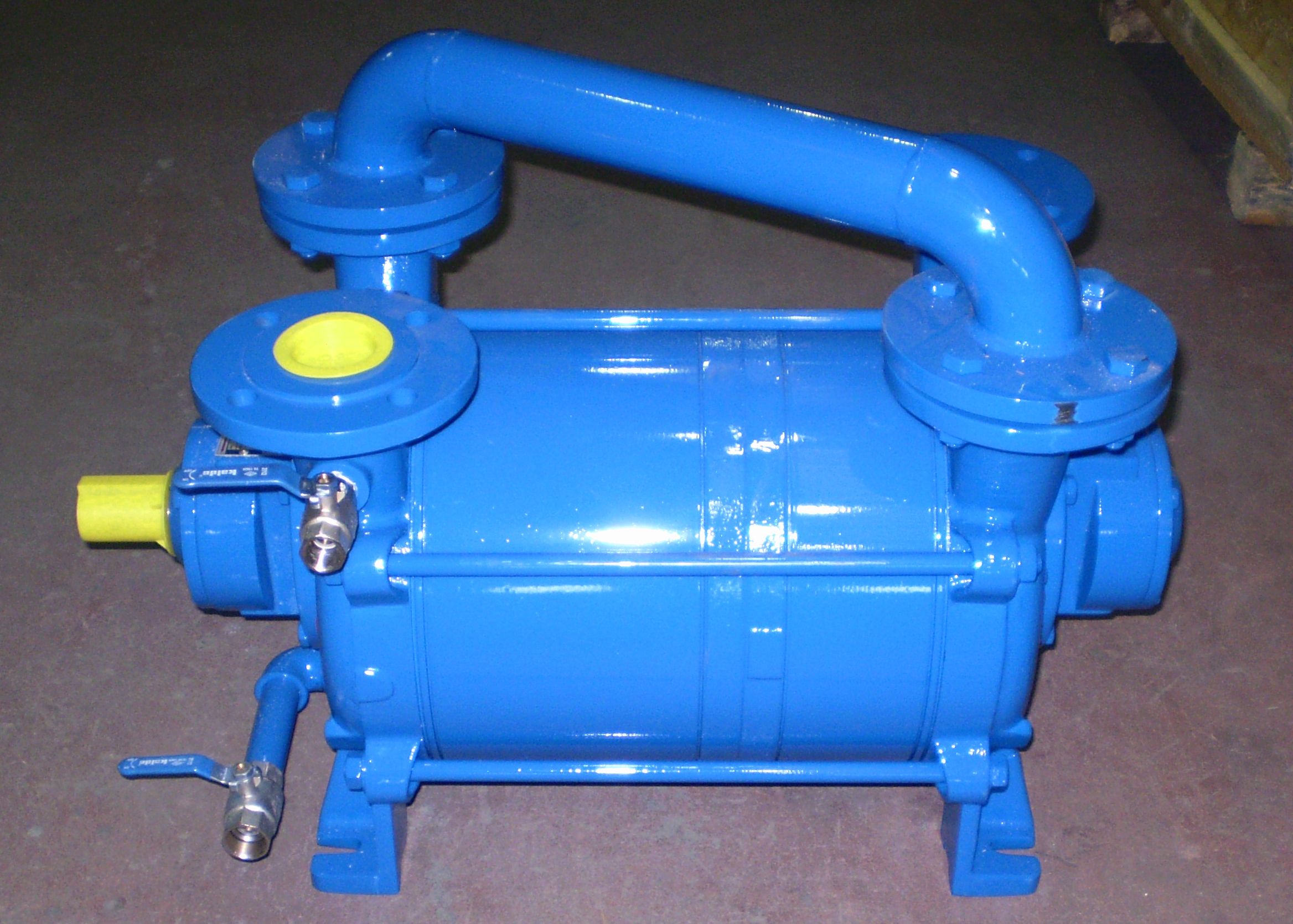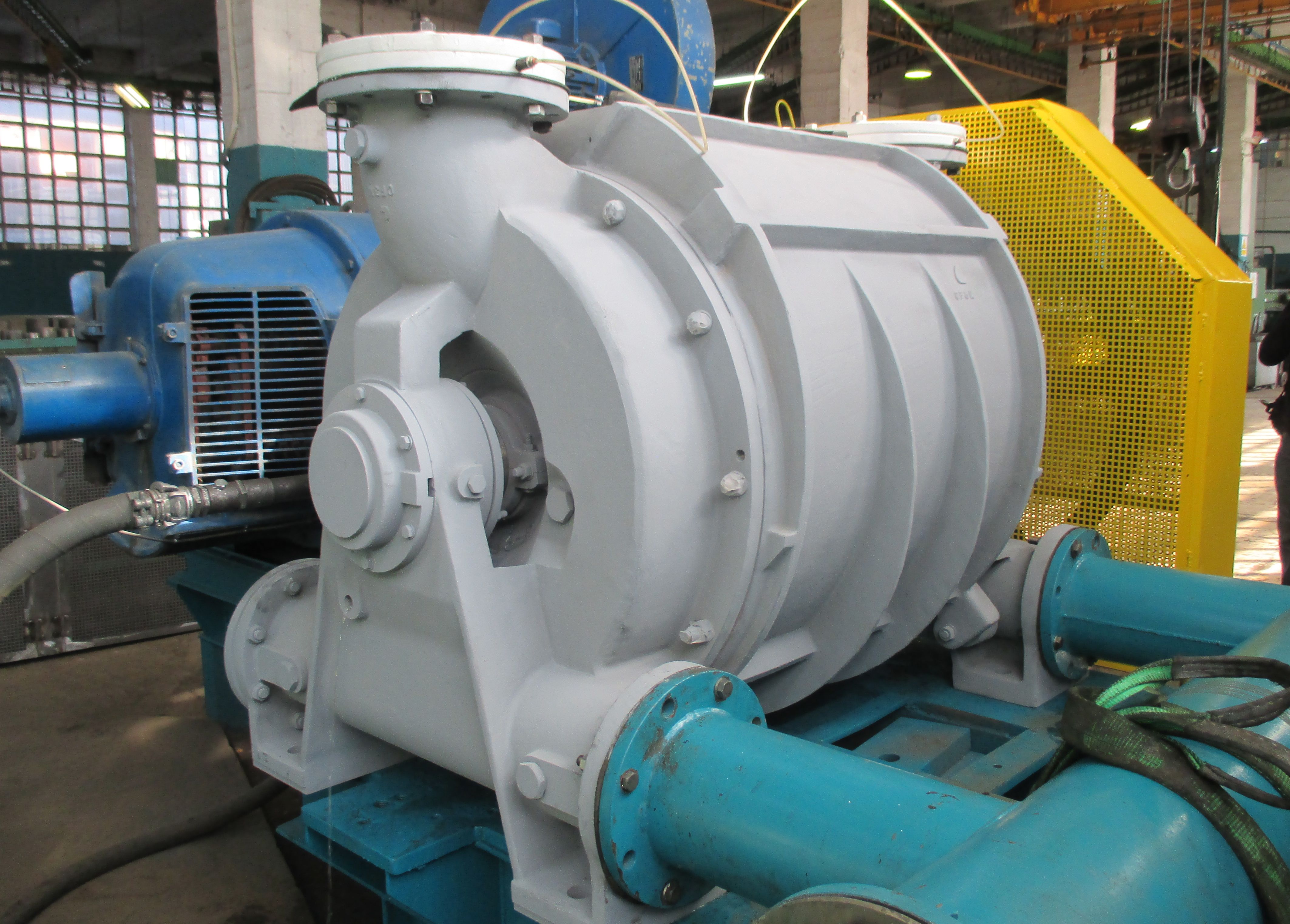Vacuum pumps
Liquid ring vacuum pumps are used for operating vacuum level up to 33-44 mbar a, depending on liquid ring temperature. Moreover, it is fairly cheap. They provide a high reliability because of their simplicity.
This type of pumps are normally used to handle gas mixtures which contain condensable vapours.

When the vacuum pump impeller rotates, the centrifugal force creates a liquid ring concentric to the periphery of the protective cover which makes the compression.
The eccentric assembly of the impeller with respect to the cover leads to an increased gap between the blades of the impeller at the inlet of the system and a small space to the outlet. When the gas comes in, is enclosed between the impeller blades and the liquid ring. When the impeller rotates, the liquid ring compresses the gas and pumps it out of the ring.
Liquid ring not only acts as a seal, but it also absorbs the heat of compression, friction and condensation. In principle, any liquid can be used but is commonly used water, oil, glycol or other liquids that not vaporize at process conditions.
The main advantages of liquid ring vacuum pumps are the following:
-
Simpler design than the most other vacuum pumps, only use a rotation system.
-
They can be manufactured with different materials.
-
Small noise and vibration.
-
Very little increase in the discharge gas temperature.
-
May handle loads condensable gases.
-
It can be operated continuously or stop.
-
Can be used any type of liquid as sealant fluid, in situations where there is a possible mixing with process steam.


